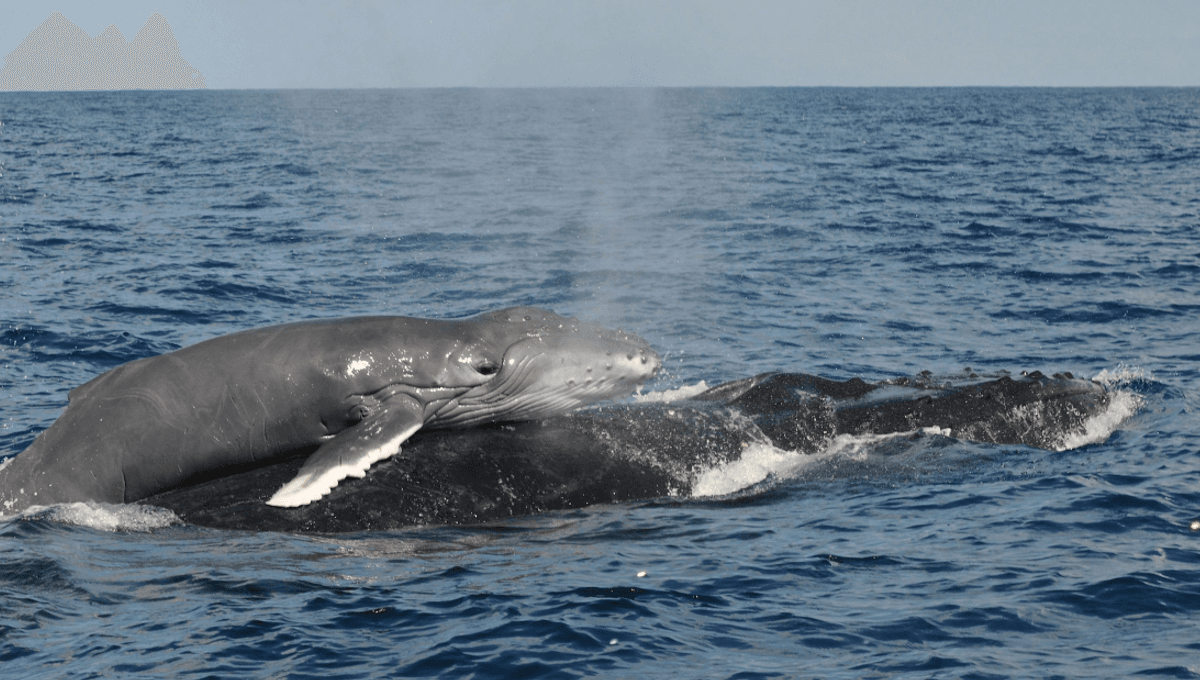
We know that whale calves and mothers communicate with one another, but what are they trying to say? A new study has provided fresh insights into the vocalizations of young humpback whales, revealing what appears to be the first evidence for begging calls in baleen whales.
The calf vocalizes and slowly moves into position beneath the mother, near the mammary glands.
Maevatiana Nokoloina Ratsimbazafindranahaka
“The calf makes different social calls, like long, low grunts, short whoops, and high-pitched whines, but when it comes to nursing, the calls are usually short, low-frequency sounds that kind of resemble barks or burps,” said study lead and postdoctoral researcher Maevatiana Nokoloina Ratsimbazafindranahaka to IFLScience, who conducted the research as a PhD candidate at Paris-Saclay University, France, and the University of Antananarivo, Madagascar.
“Most of the time, there’s nothing obvious happening externally when the calf starts making these sounds. It doesn’t typically show postural or tactile signals, like head-butting the mother, which you see in some land mammals. Instead, the calf just vocalizes and slowly moves into position beneath the mother, near the mammary glands. If the calf is really hungry, it probably calls more insistently or more often.”
A collaboration between the acoustic communications team of the Paris-Saclay Institute of Neuroscience, the University of Antananarivo, and the Cétamada association in Sainte Marie, Madagascar, made the project possible. They attached cameras to young whales using a tagging procedure that was slow and gentle to minimize disturbance (and, might we add, it looks oh so satisfying).
Cameras attached, they were able to use a combination of visual and audio recordings, as well as accelerometer and depth data, to try and work out what was going on when the whales were making certain noises. They were even able to allocate types to the calls, revealing that certain types were more common during particular activities.
For example, suckling was most commonly associated with Type #3 and Type #2 calls (the burps and barks Ratsimbazafindranahaka mentioned). Meanwhile, the Type #4 and Type #6 calls were important in predicting playful behaviors.
The research is a fascinating dip into the world of whale communication, but the team aren’t done trying to decipher what they’ve learned just yet.
“While our research certainly provides new insights into how calves use their vocalizations, one step toward strengthening these findings would be to conduct playback experiments,” explained Ratsimbazafindranahaka. “This is a standard approach in bioacoustics to test the functions of animal vocalizations. Of course, animal welfare and minimizing disturbance would be a priority, but by broadcasting potential begging calls, we could observe how the mother responds. Would she immediately adopt a typical nursing posture? This kind of test would really help confirm whether our interpretation of the calls is correct.”
Imagine being on a noisy whale-watching boat that masks these low-frequency signals – the mother might not hear her hungry calf!
Maevatiana Nokoloina Ratsimbazafindranahaka
Before they do that, they intend to lock down whether begging calls have individual signatures that could enable them to tell apart the different “voices” of the whale calves. In doing so, they could examine if mothers only respond to specific calls, as otherwise is there a risk of wasting your milk on someone else’s baby?
Many questions still to answer, then, but one thing that is clear is that preserving the soundscape of our oceans is important to all kinds of life, at all stages of life.
“Here, we see that vocalizations are linked to nursing, which is vital for the calf’s growth and survival,” said Ratsimbazafindranahaka. “This emphasizes the need to consider the impact of noise before planning any activities that could generate sound in the oceans. Just imagine being on a noisy whale-watching boat that masks these low-frequency signals – the mother might not hear her hungry calf!”
The study is published in Proceedings of the Royal Society B: Biological Sciences.
[H/T: Phys.org]
Source Link: Adorable Recordings Appear To Show Baby Humpback Whales Begging Their Moms For Milk